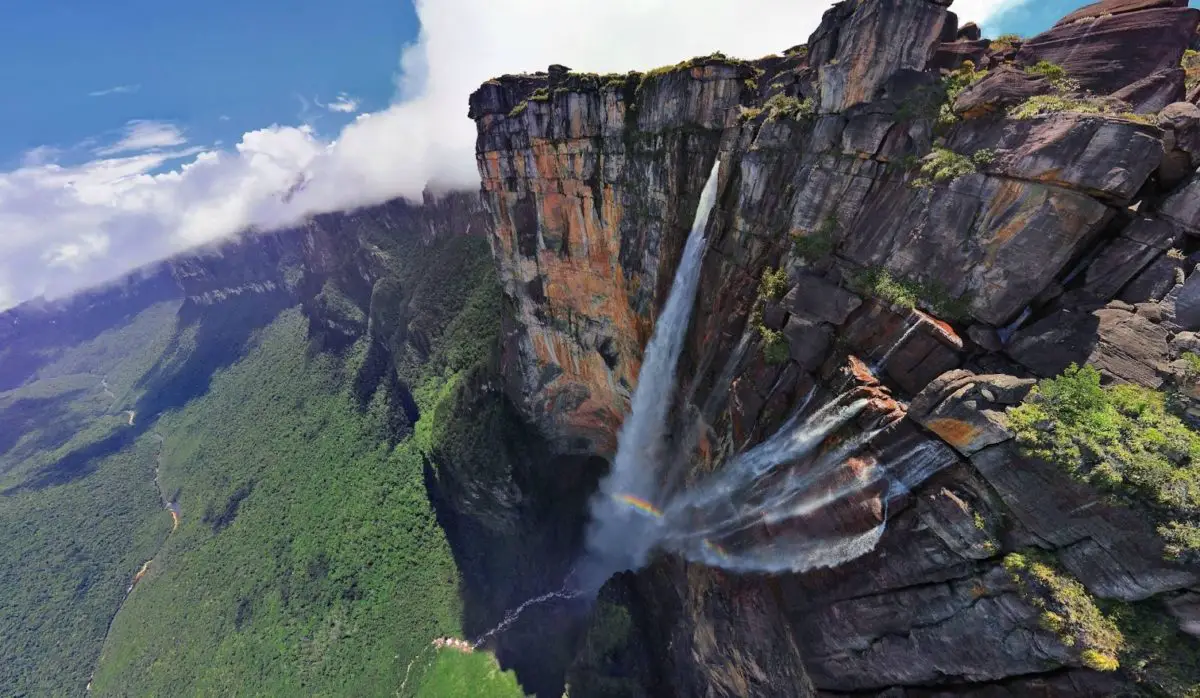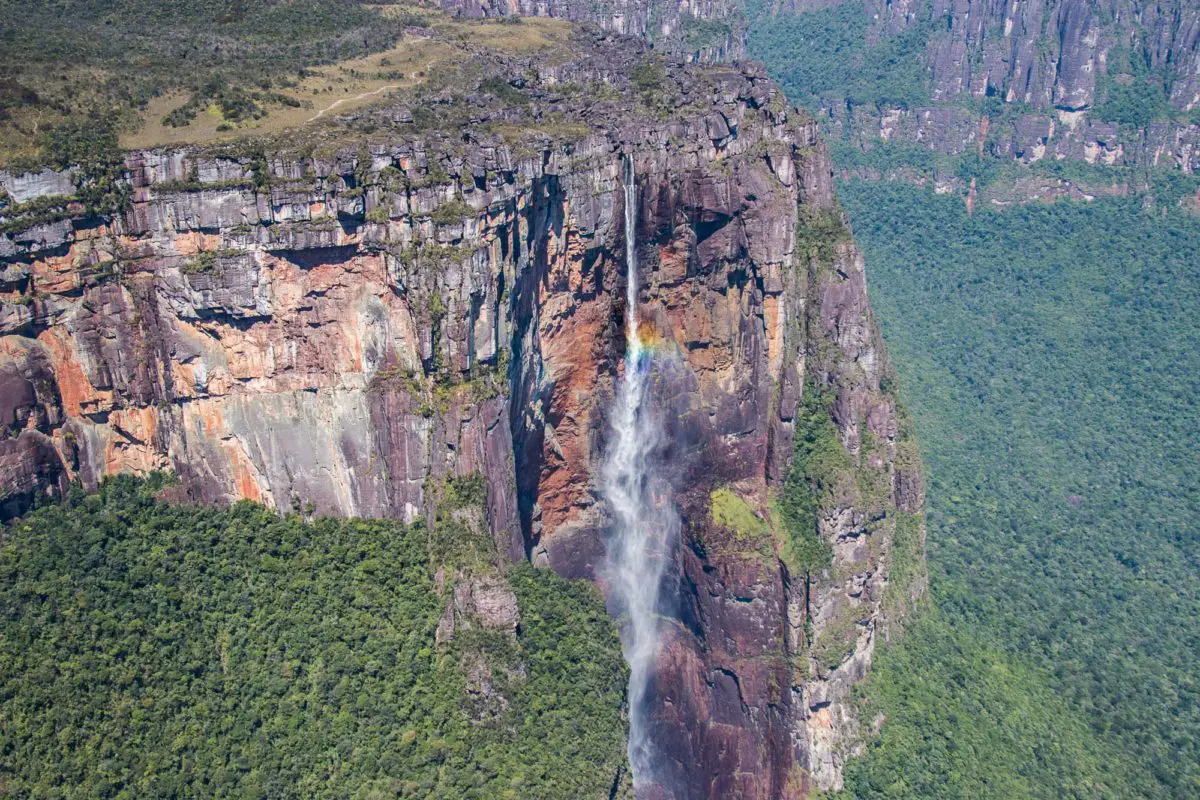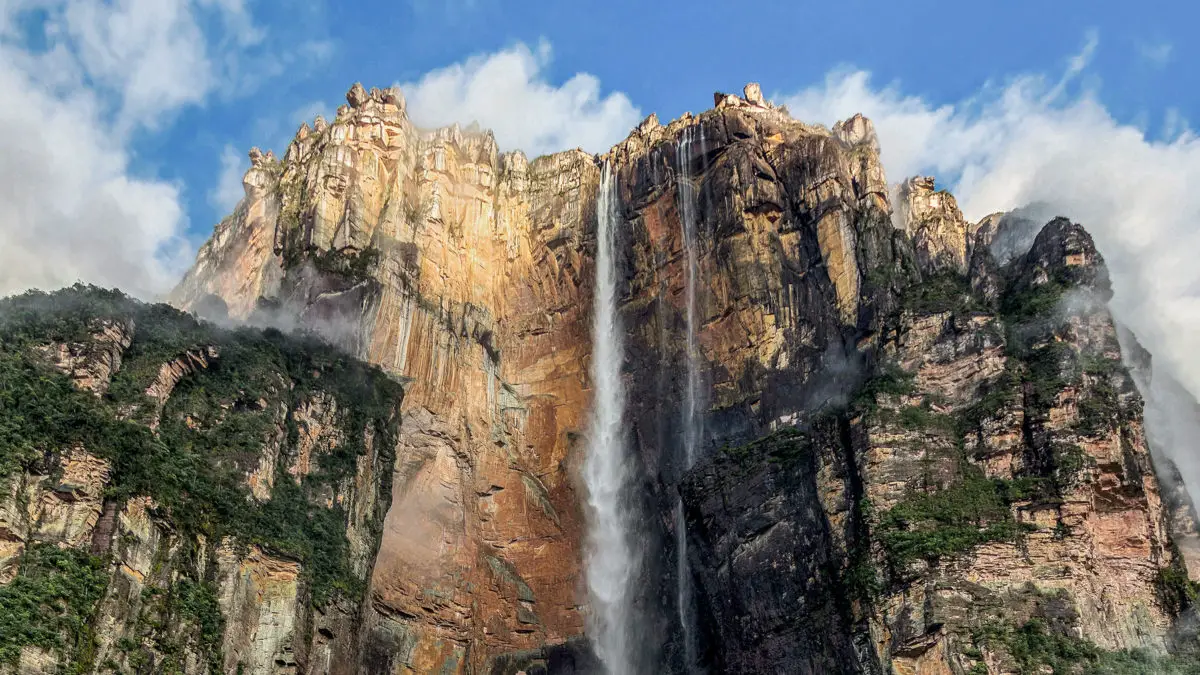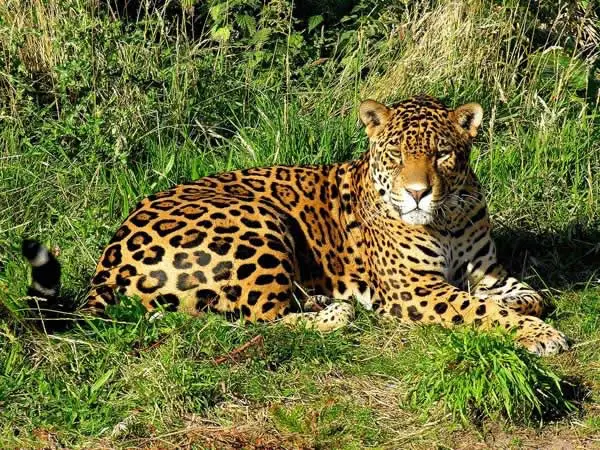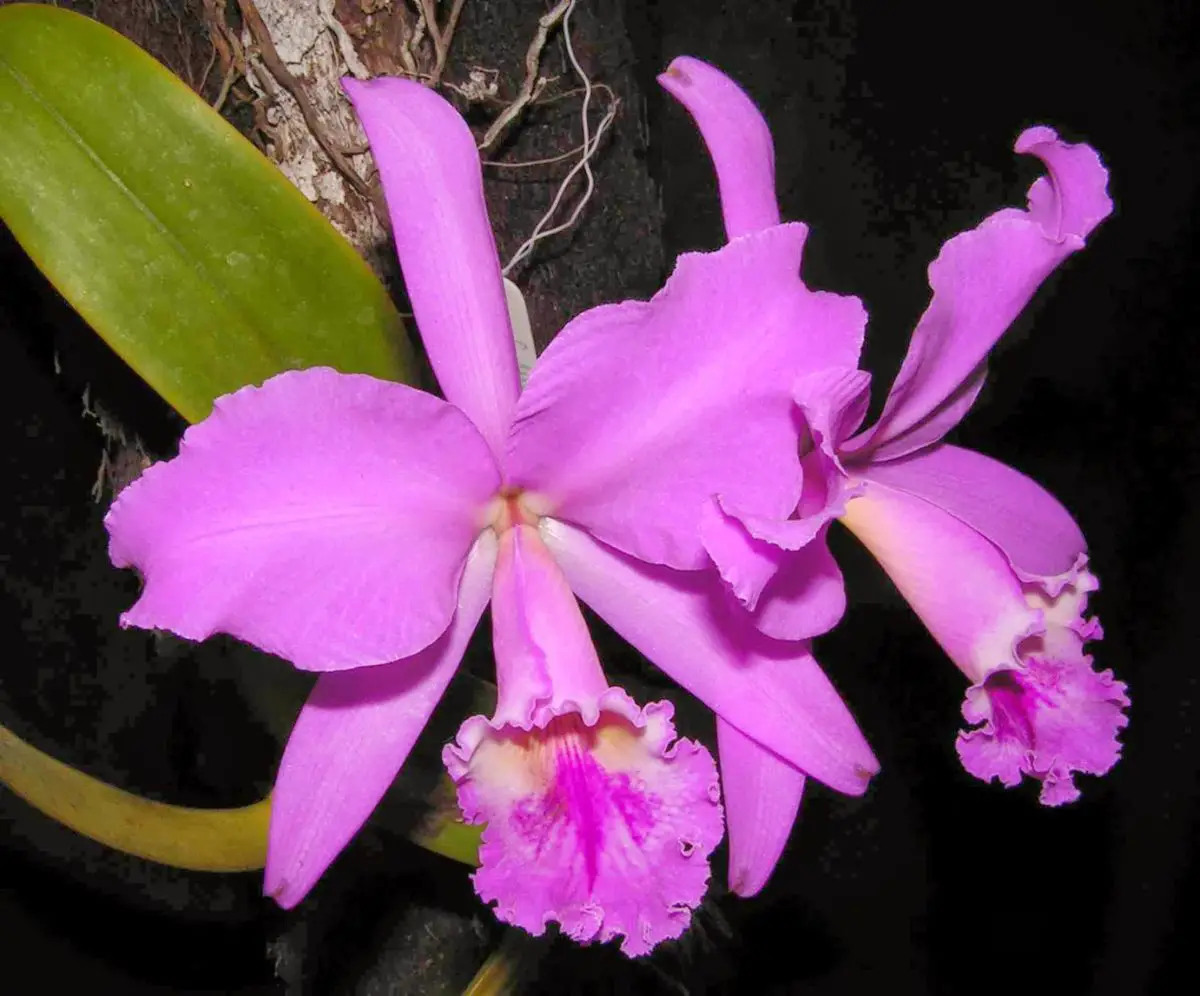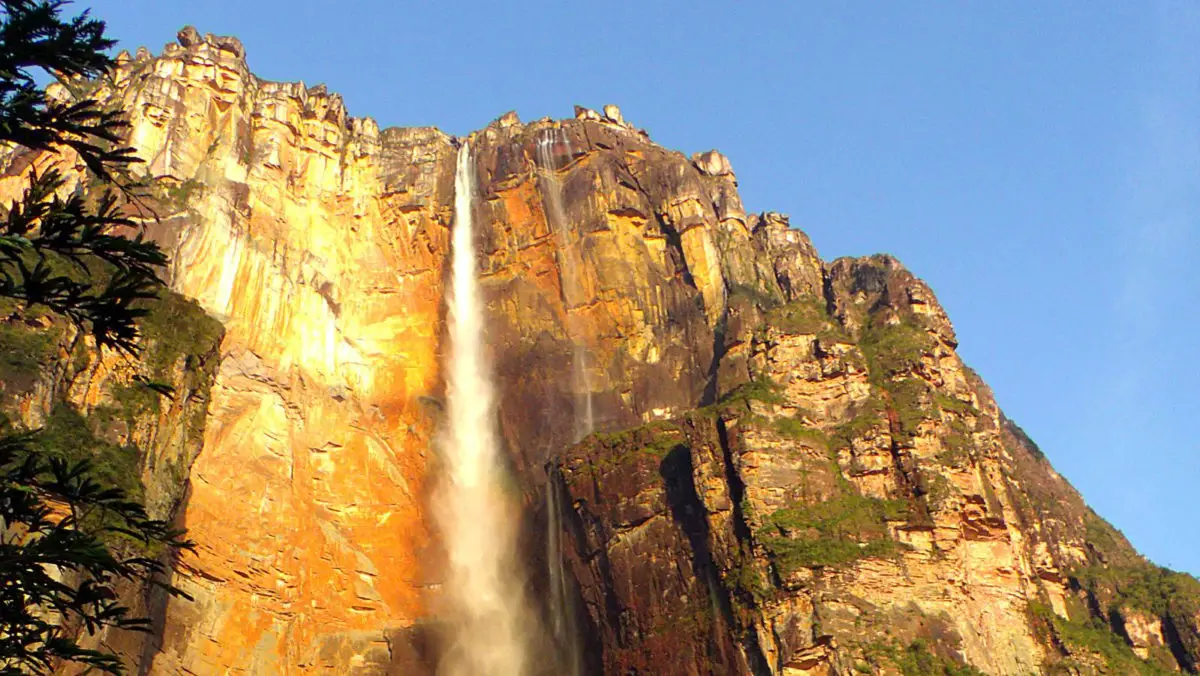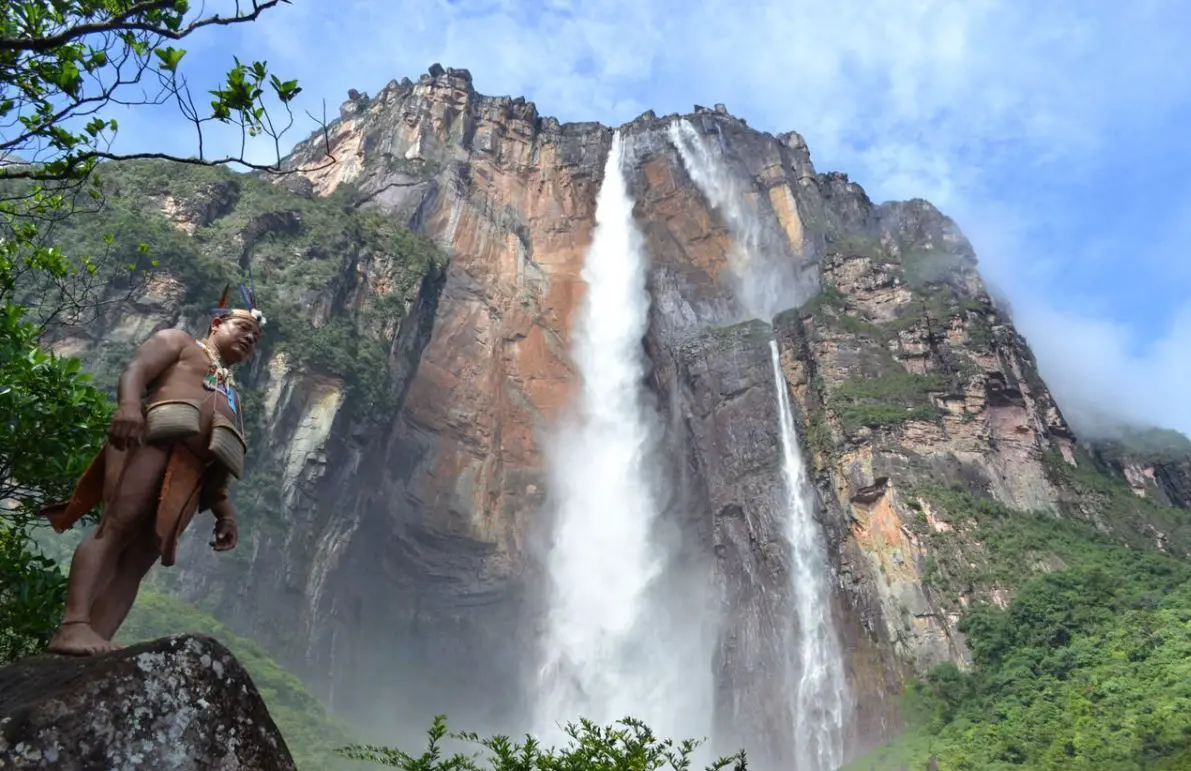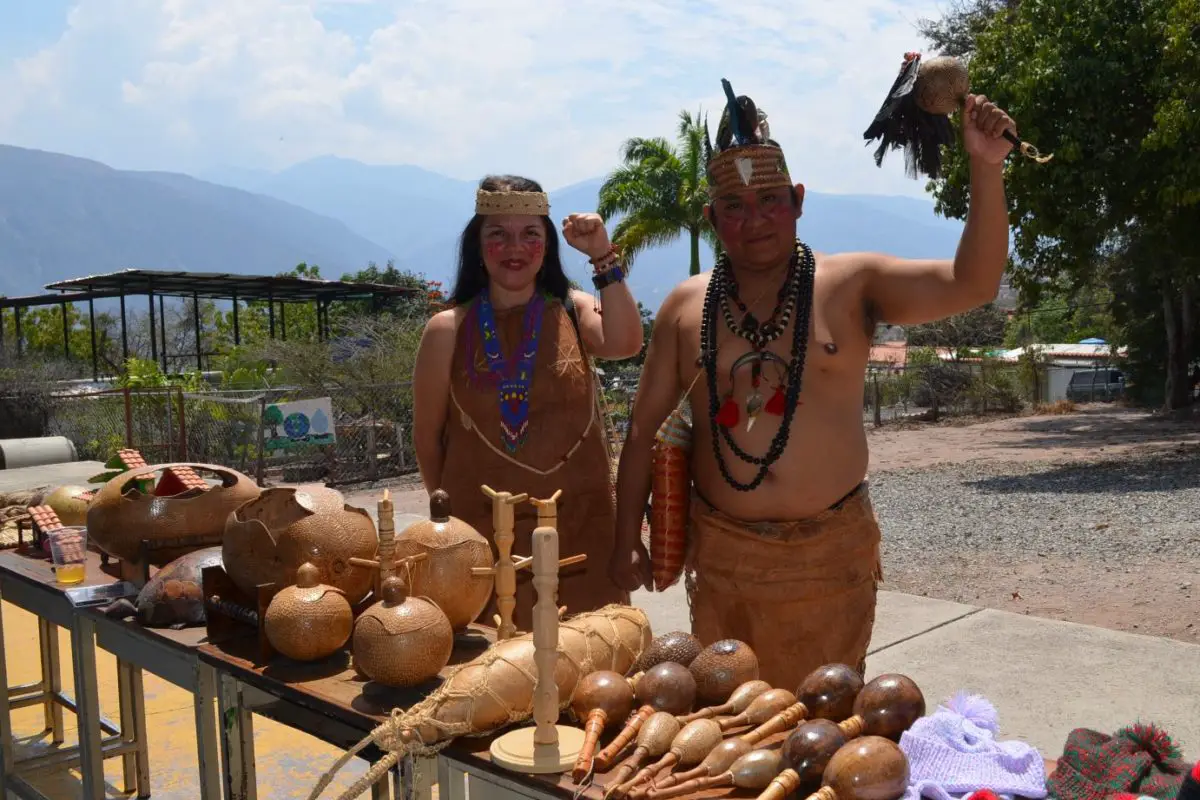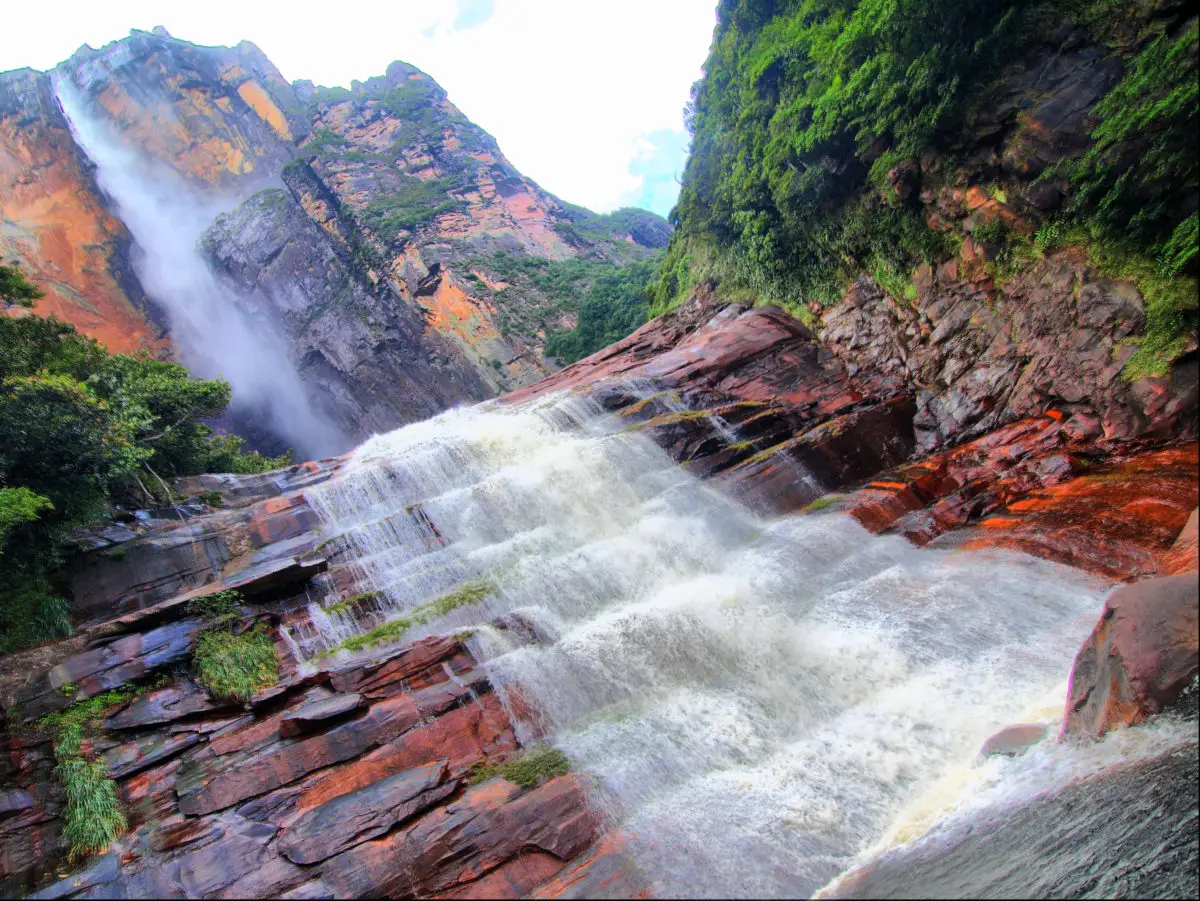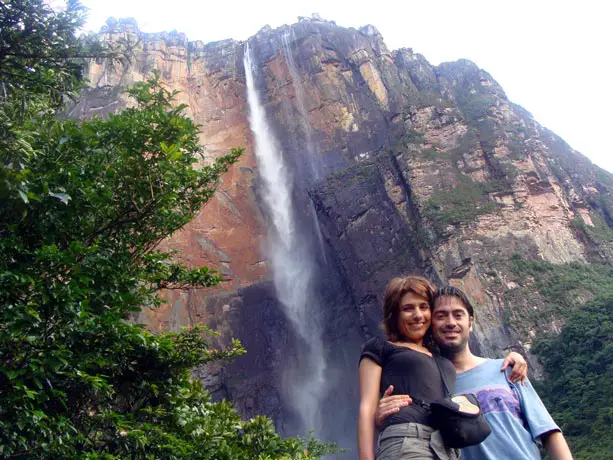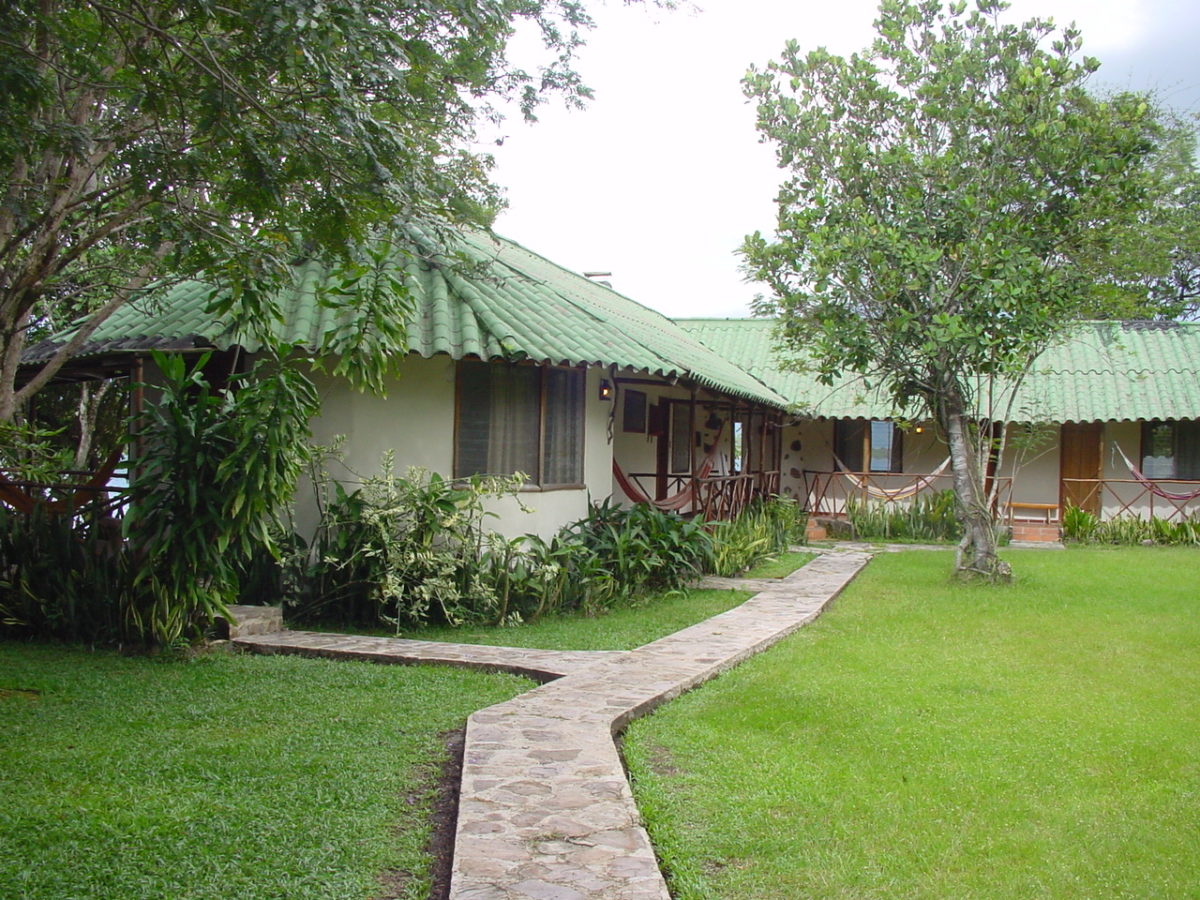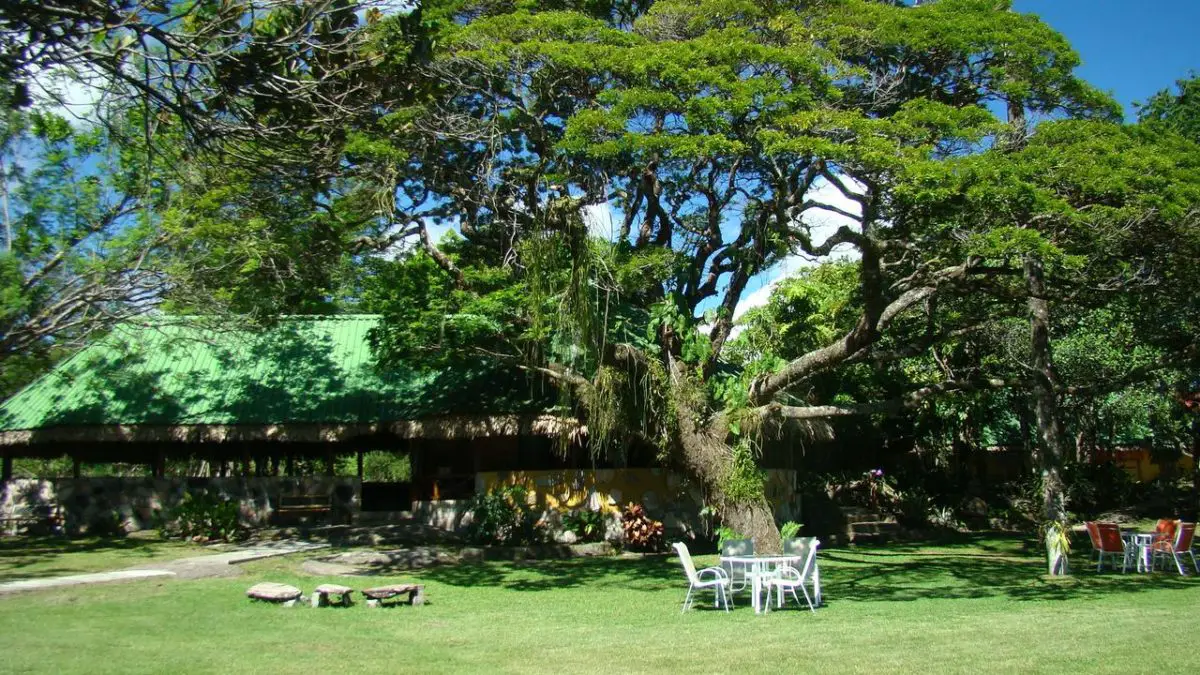Last Updated on September 19, 2023 by Hernan Gimenez
Angel Falls is the highest waterfall in the world, named Kerepakupai Vená by the Pemón tribe, and is now a UNESCO World Heritage Site. Find out all you need to know about this almost 1,000-metre-high waterfall in Venezuela’s Canaima National Park, a true paradise in the tropical rainforest.
Indice De Contenido
Discovery of Angel Falls
The history of this great waterfall, the highest in the world, begins with its discovery by an adventurous aviator of North American origin named Jimmy Angel, although historical writings point out that the Angel Falls had already been discovered by Spanish explorers Félix Cardona Puig and Juan María Mundó Freixas, who observed it in 1927.
In this sense, it is said that Cardona’s maps filled Jimmy Angel with curiosity and they decided to make an agreement with the aim of making several visits to the place where the Angel Falls were located, with a flight that took place around 21 May 1937.
In the same year, they managed to land the plane on the summit of the Auyantepuy, as this huge mountain in the jungle is called, which was quite difficult due to the risky condition of its surface, and ended up getting stuck in the ground, forcing Cardona to rescue the crew.
It was an accident that fortunately did not cause any casualties, but it was an event so important that the waterfall was baptised Angel Falls, the name by which it is known to all Venezuelans and the rest of the world.
However, it was possible to reach the waterfall by air, as it was also accessible by land, and this was done by the Latvian-born explorer Aleksandrs Laime, who crossed the river that feeds the waterfall, which begins at the summit of the Auyantepuy plateau, and later climbed it in 1955.
This Laime was also the first European to walk the path that leads from the Churún River to the base of this great waterfall, crossing a place that has since been called the Mirador Laime, currently used by tourists coming from the camps set up on Raton Island.
How long are the Angel Falls? All these discoveries of the existence of this impressive waterfall, as well as the establishment of the routes to reach it, made it possible to establish the height of 979 metres during an investigation carried out in 1949 by the National Geographic Society, with the participation of the journalist Ruth Robertson, which made the Angel Falls known all over the world.
Origin of the waterfall
With regard to the origin of the Angel Falls, we will make a previous reflection on its name in the Pemón, which refers to its popular knowledge as Churún Merú, but linguists consider that it is actually Kerepakupai Vená, which identifies the waterfall coming from a river that gives it origin, considered as a branch of the Churún River; where the name Churún Meru, corresponds to another of the waterfalls present in the same tepuy, but of lesser height.
The waterfall of the Angel is presented as an abrupt waterfall in the form of a cascade, after having passed rapidly through a bed of earth. It is formed by the presence of a rapid flow of the river Kerepakupai Vená. Its origin could be due to two causes: one corresponds to the erosion of its bed, which undermines and wears away its stone cover, forming the waterfall.
The other could be due to the presence of ice sheets, which created hanging valleys that were eroded by the presence of streams. All of this is helped by the fact that much of the water from its tributaries reaches the main artery of the river, increasing its intensity and thus its erosion, creating the largest waterfall in the world.
There are many theories and all of them agree that the passage of time and the effects of erosion have a lot to do with it. Others believe that this type of waterfall could also be due to the presence of a fault in the mountain range or in some part of it, which allows a change in the displacement of the watercourse, which ends up plunging downwards.
Canaima National Park
To speak of the Canaima National Park is to speak of a natural paradise in the Venezuelan state of Bolivar, created in 1962 and declared a World Heritage Site by UNESCO in 1994.
The park covers an area of 30,000 square kilometres and reaches the border with Guyana, where there are still areas claimed by Venezuelan territory, and the border with Brazil.
The park is notable for the fact that 65% of its area is made up of large rocky plateaus known geologically as tepuis, one of which is the Angel Falls, with many steep cliffs and several other waterfalls.
The entire park is a reservoir of the most impressive number of representative species of both flora and fauna, many of which do not exist elsewhere in the world. These include the giant anteater, the giant armadillo, the two-toed sloth, the widow monkey, the giant water dog, the endemic rodent of Roraima, the jaguar, the puma, the harpy eagle, the dwarf macaw, the tucan, the cuima piñas snake and many others.
But the flora is also dazzling, with specimens such as bromeliads, the endemic species of Tepuia, Chimataea or Quelchia, all of which are very striking and give beauty to the jungle environment of the Canaima National Park, as well as Mount Roraima, which rises above all the vegetation with its 2,810 metres above sea level.
In the western part of the Canaima National Park, there is a majestic mountain formation known as the Auyantepuy, which geologically is a tepuy, or flat mountain, whose end is formed by enormous vertical walls. This tepuy is the source of the Angel Falls, an imposing 979 metre free fall that is considered to be the highest in the world.
There are basically two ways to see such a huge waterfall: the first is by flying in a light aircraft, and the second is by taking an excursion that starts from Puerto Ucaima, located in the Canaima National Park. If you take the Carrao River excursion, it takes about three hours by boat.
It can also be reached via the Churún River, which takes you to a viewpoint where you can see the imposing Angel Falls, but this requires good physical condition and about an hour’s walk through the jungle. Canaima National Park also includes the entire right bank of the Caroní River, the second longest river in Venezuela at 952 kilometres.
Flora and fauna
The Angel Falls, part of the Canaima National Park, also has a great ecological diversity in all its surroundings, where the presence of flora and fauna is closely linked to the altitude at which it is located.
On a tour of this region, representative examples of its fauna include a large number of anteaters, giant otters, jaguars, foxes and spider monkeys, although there are also other species of monkeys.
The birds of the region are impressive, such as the harpy eagle or the dove hawk, but also strange species such as the dwarf macaw. You can also see jaguars, cunaguaro or tigers, as well as small flying birds such as the hummingbird and, of course, a large number of strange insects.
As far as the flora is concerned, this is an area characterised by the presence of a great variety of colours, with palm trees, orchids and trees such as the cedar. But perhaps the most impressive thing is the presence of species that are considered insectivorous, represented by genera similar to bromeliads.
It has been established that Angel Falls, like most of the park in which it is located, has an open grassy savannah type vegetation cover, where there are submontane ombrophilous forests or scrublands, which are always green, especially because they have a lot of humidity.
The Tepui, where the Angel Falls are located, is always green, with forests, bushes, morichales and large typical vegetation, which is considered to be Altotepuyana, a tropical rainforest with unique plant formations in the world and, as has been said, characterised by ombrophilous forests that are always green and flooded.
Likewise, in some areas of the Angel Falls, the presence of vegetation is difficult due to the steepness of the Tepuy walls, as well as the migration of some of its animal species.
Hydrography
Its hydrography is linked to its source, which is a river that rises at the top of the Auyantepuy Plateau, from where it descends into a valley that joins the Churún River, which in turn takes its waters to the Carrao River and later to the Caroní River, and from there to the Orinoco River, one of the most important rivers in South America, most of which is in Venezuela.
The water contained in the Angel Falls presents a free and unimpeded fall of 807.11 metres, which identifies it as the highest waterfall in the world, since it is located at 979 metres, with quite fast currents that drop abruptly because the tepui in which it is located reaches its end.
The hydrographic life of this waterfall depends mainly on the rains and all the streams that flow through the tepui, which end up converging in a certain point on the slope, where they fall abruptly, creating the Angel Falls.
The mountain of Hell
Angel Falls has always been shrouded in mystery. Since time immemorial, the Pemón Indians, the indigenous inhabitants of the area, have served as guides and guardians of the land where this natural wonder is located.
These same tribes, who identified the waterfall as Kerepakupai Verá, considered it to be the mountain of hell or terror, believing that it was the home of a series of evil spirits, or as they called them at the time, mawariton, and their supreme king identified as Tramán-Chita, believing that the rage of the waterfall was due to the presence of this devil.
Although it is logically known that this is not the case, since it is due to the fact that it is provided with the force caused by the intense tropical rains that concentrate and unload on this great tepui where the Angel Falls are located. This is the factor that indicates that its source does not correspond to a specific river, but is based on the sum of many streams that converge and fall in the same place.
Legend of Angel Falls
The Angel Falls are a symbol of the Pemón culture, which developed in the area known as La Gran Sabana, in south-eastern Venezuela, and in the Canaima National Park, where the falls are located.
It is a civilisation rich in legends and cultural manifestations that are still maintained today, characterised by the fact that these people have the function of guardians of the entire park. With this in mind, we would like to share with all our readers a legend known as the Magic Totuma:
In ancient times, there was an important warrior among the Auyan tribes who made expeditions near the highest tepuy, the Auyantepuy. This Indian carried with him a totuma that was considered magical because it had been given to him by his shaman, who was a witch doctor, so that he could use it to cure any ailment that might arise during his journey.
On the way, he meets a great eagle that has been wounded by another Indian’s arrow, and he asks Auyan for help, using some of the water from his totuma, the eagle gratefully asks him how he can help him, and the Indian replies by taking him to the top of this tepuy to appreciate all its greatness.
This was done and the warrior, in the face of so much wonder, accidentally dropped the totuma, which, for those who don’t know, is the fruit of a tree called the totumo, then emptied the contents and it became a canteen for carrying water.
When the totuma falls, it creates an endless waterfall known as Kerepakupai Merú, commonly called the Angel Falls or perhaps the Magic Totuma Falls.
The adventure of reaching Angel Falls
Getting to know the Angel Falls is no easy task. You can see them in all their majesty from the air, either by small plane or on an excursion from Puerto Ucaima in the Canaima National Park, which takes about three hours by boat on the Carrao River and then on the Churún River.
Others make the trip in a rustic vehicle, but of course it takes longer and they have to be prepared to cross jungle areas. Those who have made the journey say that it is a good resting place because it is a 120-kilometre journey from a place called El Manteco, in the state of Bolivar in Venezuela, through areas of mud, mud, stones, branches and fallen trees.
But these places also allow travellers to contemplate the wonders of the fauna and flora of the entire region, later arriving at a camp called El Bocón, in the state of Amazonas. The whole trip will take at least a couple of days, and on the third day, you will start walking for several hours to reach a landing stage on the Caroní River, from where you will continue by curiara, a canoe built by the Pemón Indians who live in this region known as the Venezuelan Gran Sabana.
This area practically borders the Canaima National Park, which is the final destination, where the Angel Falls are located. Once in the curiara, which is manned by just two pemones, you climb up the Caroní and reach the Salto de las Babas, from where you begin the climb through the jungle. From the top of one of the peaks, you can see all the waterfalls of the Canaima Lagoon in the distance, and behind them, the Tepuyes.
After another day of rest in a guesthouse run by Pemon representatives and pioneers of the region, the journey begins again by curiara along the Carrao River, until it reaches its confluence with the Churún River, to go upstream and arrive at the foot of the hill where the highest waterfall in the world can be seen from close up, having already reached the Angel Falls.
Ucaima Camp
Located just two kilometres from the Canaima Lagoon, on the banks of the Carrao River, the Ucaima Camp is a jungle tourist resort that has been operating in the region since 1956, founded by Rudolf Truffino, who, together with his wife, ran it from the beginning.
The name Ucaima comes from the Pemón dialect and means “that which attracts”; today it is in the hands of his daughters, who attend to tourists and the general public with the same warmth with which their parents did.
As mentioned above, it is located on the banks of the Carrao River, a few kilometres from the airport where the planes that fly over the Angel Falls depart, and from where you can also take a boat to the Churún River.
The camp has all the necessary facilities to accommodate tourists, providing them with all the comforts and offering them plans for their visit to the Angel Falls. The only thing you have to do is get to the camp, and as we have seen, the quickest way is through its airport.
The journey to get to know or explore the Angel Falls is not easy, in fact it can be quite exhausting, but in the end the experience gained during the journey and the contemplation of this waterfall as a prize, justifies it, and therefore we invite you, if you have the opportunity, not to miss it.
Angel Falls is also in the movies
Angel Falls is such a famous waterfall that it has been considered as a reference theme or setting for some big screen productions, as in the case of the Disney Pixar film UP, where the Tepui where Angel Falls is located is seen as the dream place for the retirement of an old married couple.
In the same way, some of the landscapes of the Auyantepuy were used as inspiration for the making of James Cameron’s film Avatar. In particular, the waterfalls in the world of Pandora.
The Disney film Dinosaurs, released in 2000, also used real images of Canaima National Park and Angel Falls in several scenes.
These films, as well as many others, have used the Canaima National Park jungle as a backdrop for their natural scenery, and between one image and the next, those who already know this representative Venezuelan waterfall, the Kerepakupai Vená or Angel Falls, can appreciate it in all its majesty in a way that is unmistakable.
If you found the information in this article interesting, we invite you to find out more by clicking on the links below:
- River Sella
- Lake Baikal
- Guadalete River
- Magdalena River

